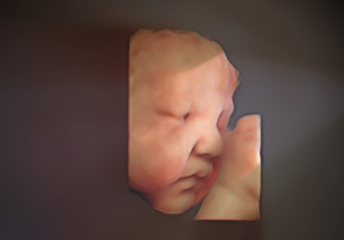An ultrasound uses sound waves to create a “picture” of your baby on a monitor. With a standard ultrasound, a gel is spread on your abdomen. A special tool is moved over your abdomen, which allows your doctor and you to view the baby on a monitor.
An ultrasound exam can be performed at any point during the pregnancy. Women commonly have an ultrasound between 18-20 weeks. An anatomy ultrasound is performed to see if there are no abnormalities with your baby.
During a mid-pregnancy ultrasound, your caregiver will:
An ultrasound exam is also used as part of the first trimester screen and biophysical profile (BPP). Based on exam results, your doctor may suggest other tests or other types of ultrasound to help detect a problem.

All pregnancy ultrasounds at Marshall Obstetrics & Gynecology are read by our fellowship-trained maternal-fetal medicine specialists. The latest 4D ultrasound technology is available for high-risk pregnancies at our office in Marshall Health - Teays Valley.

An outpatient department of Cabell Huntington Hospital
Marshall Health - Teays Valley
300 Corporate Center Drive
3rd Floor
Scott Depot, WV 25560
Phone: 304.691.1800

1616 13th Avenue
Suite 100
Huntington, WV 25701
Phone: 304.526.2124